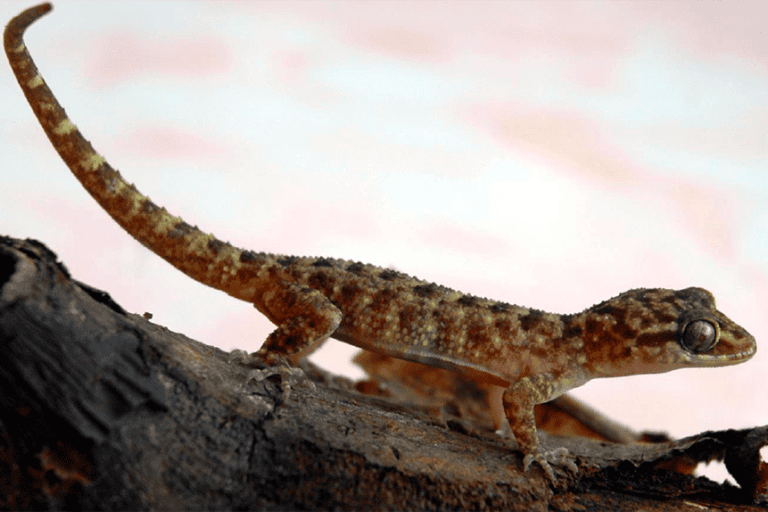- A group of researchers has described as a new species a gecko endemic to the Indonesian island of Bali.
- Cyrtodactylus jatnai was for nearly a century thought to be Cyrtodactylus fumosus, a species found almost a thousand miles away in Sulawesi Island.
- In their newly published paper, the researchers identify distinctive physical characteristics that make the Bali species unique in its own right.
- They named the species in honor of Bali-born ecologist Jatna Supriatna, hailed by Conservation International as “the conservation warrior of Indonesia.”
BOGOR, Indonesia — For nearly a century it was thought to be a separate population of a gecko species found in Indonesia’s Sulawesi Island. Now, the bent-toed gecko found in western Bali, nearly a thousand miles to the southwest, has been declared its own, distinct species.
The description of Cyrtodactylus jatnai is based on a study of its distinctive body features and family tree, and presented in a paper published in May in the journal TAPROBANICA.
“This bent-toed gecko from Bali is indeed special because for a century it was known as Cyrtodactylus fumosus,” said study co-author Awal Riyanto, a herpetologist at the Indonesian Institute of Sciences (LIPI).
The new name pays homage to veteran Indonesian conservationist and ecologist Jatna Supriatna, who was born in Bali and has been called “the conservation warrior of Indonesia” by Conservation International.

While C. jatnai most closely resembles C. fumosus, it also bears a strong likeness to other geckos in the genus found throughout the region, including Malaysia’s C. seribuatensis and C. batucolus, and Australia’s C. kimberleyensis and C. sadleiri. Within Indonesia, it also has a close resemblance to C. darmandvillei from the Flores and Kalao islands, and C. petani in Java. There are more than 250 known species of Cyrtodactylus, making it the biggest genus of geckos.
The authors of the new paper — a team representing LIPI, the University of Indonesia, the Bogor Zoology Museum, and La Sierra University in California — write that the newly described species has distinctive head, back and tail markings that set it apart from its Sulawesi cousin. The species is native to West Bali National Park, a protected area.
“The new species is believed to be the only one reported in West Bali and endemic,” said A.A. Thasun Amarasinghe, a herpetologist from the University of Indonesia and lead author of the paper.

The authors say there needs to be protection of endemic geckos, which play an important role in the food chain. They also call for more research into the wildlife of West Bali National Park, which is home to 250 known species of birds, 120 fish species, 67 butterfly species, 18 mammal species, 13 reptile species and 10 amphibian species. The park, which spans 19,000 hectares (47,000 acres), consists of lowland rainforest, coastal forest and coral reef.
“We assume that there will be even more surveys and studies about biodiversity in Bali island after this, including fauna species that has probably evolved due to its proximity to the Greater and Lesser Sunda islands,” Amarasinghe said.

Citation:
Amarasinghe, A. A., Riyanto, A., Mumpuni, & Grismer, L. L. (2020). A new bent-toed gecko species of the genus Cyrtodactylus Gray, 1827 (Squamata: Gekkonidae) from the West Bali National Park, Bali, Indonesia. TAPROBANICA, 9(1), 59-70.
This story was first reported by Mongabay’s Indonesia team and published here on our Indonesian site on June 1, 2020.
FEEDBACK: Use this form to send a message to the author of this post. If you want to post a public comment, you can do that at the bottom of the page.